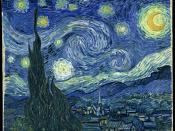Bipolar disorder is a brutal mental disorder which involves frenzied occurrences that usually accompany episodes of severe depression. Bipolar is a persistent mental ailment that affects around two million people in the United States. Symptoms of this disorder can appear in childhood or early adulthood, while in some instances it can start as early as childhood or possibly the late 40s or 50s, and can continue throughout the sufferer's whole life. One round of the bipolar disorder can last for days or weeks at a time, and can cause disturbances in the lives affected by it.
The Bipolar disorder is described by irregular patterns of expressive mood elevations, commonly known as mania, along with the lows, or depression. The brutality of these signs differs from person to person, and can range from calm to bad symptoms. The symptoms of mania (the high) includes the feeling of euphoria, magnified self-esteem, hurried speech, thoughts racing, can be easily agitated, carelessness, intense irritability and being incapable of concentrating.
In severe cases, victims can have delusions or hallucinations. These symptoms can be confused with Attention Deficit also known as Hyperactivity Disorder in children sufferers, which are frequently treated as such. The psychoanalytic theory states that mania is a denial of and a reaction to a 'masked' depression (Moriss and Meisto, 2005). During the phase of depression, signs consist of constant feelings of unhappiness, nervousness, blame or despair, sleep and desire for food are disturbed, and lose interest in normal daily events. The phases of depression are very serious at times, and consequences could be suicidal tendencies.
The cause, for this disorder is currently unknown. Some physicians and scientists think it comes from a variety of environmental, and genetic, biological factors that set off incidents of the bipolar disorder. There is said to be evidence...



great
great
0 out of 0 people found this comment useful.